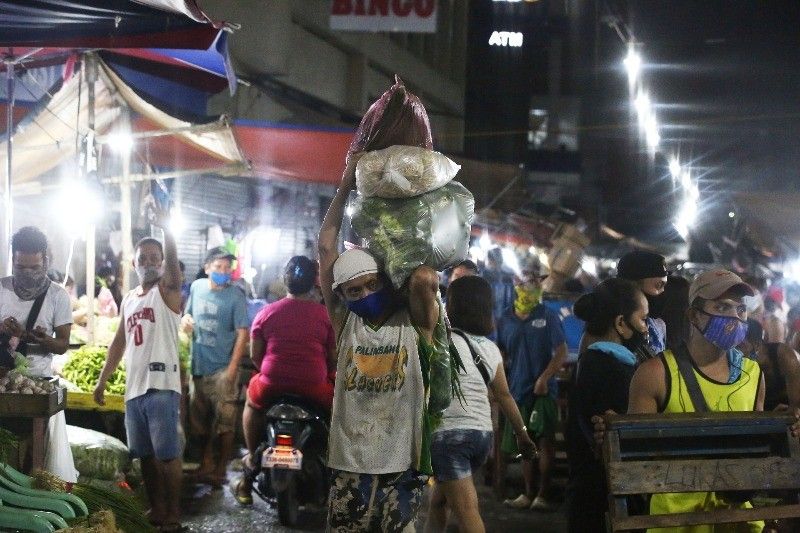'Transitory' inflation sees gov't scrambling for fix

MANILA, Philippines — What officials have repeatedly characterized as a “transitory” inflation surge has now required government intervention to contain.
After trying to downplay quickening inflation for months, the Duterte administration is now scrambling to tame rising consumer prices that left unchecked, threatens to derail a fragile economic rebound from the pandemic this year.
Food prices have particularly risen unabatedly due to supply shocks that initially were expected to dissipate on their own. That did not happen, and now consumers battered by record-high joblessness due to the health crisis are experiencing a double-whammy of expensive pork and vegetables.
“Let’s all take the initiative to ensure the efficient and fast delivery of food and other produce from the farms and fish grounds to the market,” Agriculture Assistant Secretary Noel Reyes said in a virtual briefing on Tuesday.
The problem is mainly a result of tight supply. As an intended fix, the agriculture department is in talks with provinces left by typhoons unscathed last year to deliver vegetable supplies to Metro Manila where food inflation was running above national average at 3.2% in December.
The bigger challenge, however, lies on pork whose supplies were heavily crippled by the prevailing African swine fever. By Reyes’ estimates, existing produce are down by over 4 million metric tons from last year, fresh from the holidays when demand for meat was typically high. As a solution, 54,000 MT of imported pork will be permitted in.
Trade Secretary Ramon Lopez, meanwhile, set his sights on suppliers allegedly trying to profit from the situation and therefore influencing inflation. Sixteen of 274 sellers believed to be unscrupulously jacking up prices had been charged, while 1,070 others were asked to justify their prices.
No longer ‘transitory?’
Whether or not government solutions would rein in prices remains to be seen, but the latest measures do show that consumer price increases are slowly becoming a problem and not as transitory as it looks as the central bank had tried to suggest.
For Emilio Neri Jr., lead economist at Bank of the Philippine Islands, signs had been there since late last year when inflation jumped to 3.3% in November, following five typhoons that left thousands of crops unsuitable for harvesting. “There is a risk this may no longer be transitory,” he said in an online exchange.
“Price pressures could continue globally just as major economies like China and the US seem to be recovering faster than anticipated and are exerting pressure for prices to rise substantially,” he explained.
Alvin Ang, economist at Ateneo de Manila University, agreed, saying in another online exchange that “our forecast is it might hit 4% by March also due to base effects.”
That would present a dilemma for the Bangko Sentral ng Pilipinas (BSP). After consumption significantly fell last year, inflation became least of the BSP’s problems, allowing them to aggressively loosen monetary policy by 200 basis points. By doing so, it provided P2 trillion in liquidity so that the economy has enough cash to fund economic activities.
But that same liquidity now seems to be working against BSP’s primary goal of keeping a lid on prices. Inflation at 3.5% in December puts the central bank’s 2-4% target this year at risk. Worse, cash is not seeing their way to consumers through bank loans, after lending had virtually stopped over fears jobless Filipinos will default in their obligations.
BSP is reserving comment on the matter for Thursday when its quarterly inflation report is released.
While prices rise, analysts said BSP is unlikely to withdraw its monetary stimulus for now. “My view is that BSP will wait and see how GDP growth has responded so far (to) its aggressive monetary easing,” Ruben Carlo Asuncion, chief economist at UnionBank of the Philippines, said.
Neri agreed. “They may continue to talk it (inflation) down as transitory and keep rates at 2%,” he said.
The next risk to watch out for is whether there would be stagflation or a compounded case of soaring inflation, high joblessness, and slower growth. Ang said this is highly unlikely. “Inflation is still within the bounds of BSP band,” he said.
- Latest
- Trending































